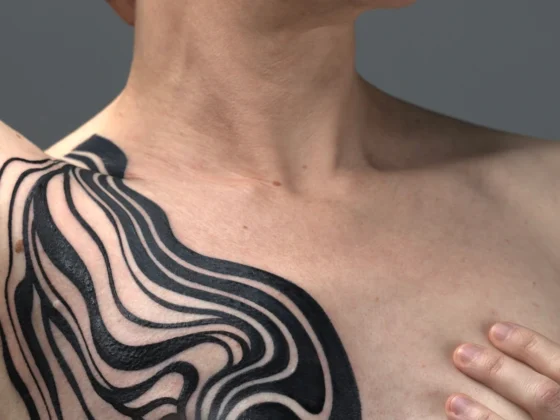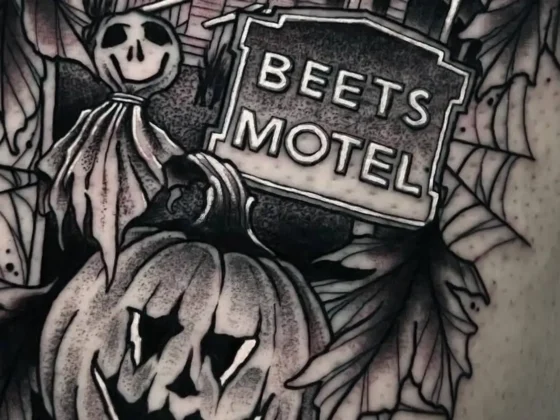Inked Mag
January 21st, 2019
Louis K Meisel Shows INKED an Exclusive Look Into the World’s Largest Collection of Pin-Up Art
While Meisel sits at a glossy, black desk at 141 Prince Street, in the art world, he sits on a golden throne.
Louis Meisel was born in Brooklyn in 1942. As he grew up in the ‘50s, his attention had always gravitated toward pin-up art. From the time he was 20-years old, he knew he was going to be an art dealer.
“My formative years were during the highlight of the golden era of pinups,” Meisel said. “Seeing pin-ups in Playboy and throughout the ‘50s had a huge impact.”

Meisel said he grew up with the abstract expressionists and the pop artist “as a groupie kid hanging on.” From when he decided to start art dealing, he focused on what he considers to be today, “the finest realist painters and sculptors in the world.”
When Meisel bought his first Elvgren painting in 1970, his stake in the art-dealing world was planted. “I was at an antique show and I saw a $300 Elvgren painting and I bought it. Since that day I’ve been in and out of almost 200 Elvgren paintings, and easily over a thousand pin-ups to this day,” he said.

The trouble with finding these pieces, Meisel explains, is that they weren’t Being shown in galleries where you could buy them. They were being given away by the calendar and publishing companies. “They were sold at a very inexpensive price, and nobody really cared about them,” he said.
As a collector, “It was a matter of tracking them down and finding them wherever you could,” Meisel said. This included many hidden antique shops to collect the “calendars, blotters and the matchbooks that had pin-ups printed on them.”

By the end of the ’70s, Meisel had a “substantial collection of original paintings.” He met another collector, Charles G. Martignette, who became one of his partners and best friends.
“Charles was doing the same thing, even more emphatically. I mean he had thousands and thousands of paper,” Meisel said. “The two of us got together and we became the biggest collectors, dealers, and authors.”

Fifteen years ago, Martignette died of a heart attack. He left his collection to Meisel, leaving Meisel as the only “real collector in the world.”
Meisel describes himself as a “different kind of collector.” The kind that isn’t focused on commercialism, or for selling to people that are buying for an investment. The kind that has collectors from all over the world request to come in and see Meisel’s inventory. However, Meisel did not get to where he is without receiving critique.

“By the same token, people kind of sneered at me, saying, ‘Oh, you’re showing illustrators, right?’ Well, we got up to $300,000 in Elvgren, and Vargas up to $100,000’,” Meisel said.
But Louis K Meisel didn’t care. He knew his incredible catalog was full of great, quality artists. “I never really bothered with what people thought. I just found what I thought was historically important, artistically important, with skill, craftsmanship, beauty,” Meisel said. “All of the things that people discount nowadays.”
Meisel describes the pin-up girl as “sexy, but chaste.” He adds, “very seldom are they nude. They are dressed sexually, but always with a kind of girlish, pretty look.” Meisel also noted, “Amusement and humor have always been an integral part of pin-up art.”

In the ‘50s, the big appeal was that the models were, “The all American girl that the boys came back to from World War II and the Korean War, to find, marry, love and have children with.”
Meisel highlights the many themes over pin-up’s time, like nautical, cowboy, lingerie, and NAPA sports. All of which Meisel holds in his inventory, in a floor underneath the gallery, blocked off by rope. He also hangs many more in his 4,000 square-foot loft above the gallery.

Meisel advocates, “Pin-up never bordered on anything even close to pornography. When feminism in the ‘70s came, they didn’t really object to that.”
While the ‘70s feminist movement objected to some of the nudes that Mel Ramos produced, “pin-up was always an art form that was special to American history.”

Meisel expresses frustration with the commercialism, and “lack of fun” in the galleries today. “You’re not allowed to use the word “beauty” or “quality”, because it’s not politically correct,” Meisel said. “Because so few people can do it, and we want everybody to get a trophy, whether they’re good or not.”
Meisel commented on the effect modern social issues have on contemporary art. He references the #MeToo Movement—strictly in the sense that he doesn’t believe in policing art.
While Meisel’s childhood paved the way to where he sits today, the influences he has had on legendary artists throughout history is even greater.
While Meisel had written books that determined which artists were important, he also helped change well-established books in the field. The Key Monuments of the History of Art, the book many art students are given on their first day of college, had finally included women after many editions. Thanks to Louis K Meisel.

Meisel conserves pin-up art, “because it’s part of history, and all has a reason to be collected, written about, and preserved,” he said. “It’s craftsmanship, done with skill and quality, and there’s not much of that being done today.”
As far as Meisel stands on the art form of tattooing, he wears traditional Jewish-faith values, in that he’s never thought about getting one. Even if it were to be a tattoo of his favorite pin-up artist’s work.
Because he knows only Elvgren could do it best. Although, Meisel needed slight nudging to declare a favorite artist from his collection of thousands.
Editor's Picks
Paul Booth Illustrates Cover for Pantera Graphic Novel
The revered tattoo artist created a cover for a graphic novel celebrating the 30th anniversary of “Vulgar Display of Power”
Scary Spider Tattoos
Spiders are terrifying, yet for some reason people sure do love to get tattoos of them














